13 Overrated Spots I Regret Visiting — Plus 8 That Totally Surprised Me

We’ve all been there—scrolling through glossy travel pics, booking the ticket, and then arriving… only to feel like the destination was more Instagram than inspiration.
I’ve had plenty of those meh moments, standing shoulder to shoulder with tourists, paying triple for a mediocre meal, and thinking, “Was this it?” But here’s the flip side: some of the most unforgettable places I’ve found were the ones I stumbled into by accident—tiny towns, quiet corners, or overlooked landmarks that turned out to be pure magic.
So, which spots are all show and no soul—and where should you actually go instead? Let’s dive into some brutally honest travel swaps that might just change your next itinerary.
1. Hollywood Walk of Fame: Stars Under Your Feet, Disappointment in Your Heart

My expectations soared as I headed to this iconic Los Angeles landmark. What I found instead was a grimy, crowded sidewalk with stars that were smaller than I imagined.
Street performers aggressively demand money for photos, while costumed characters hustle tourists at every turn. The surrounding area feels seedy and overrun with tacky souvenir shops.
Save yourself the trouble and drive by quickly if you must see it. The real Hollywood magic happens elsewhere, and this tourist trap offers nothing but a dirty stretch of concrete with names you can easily Google from the comfort of your hotel.
2. Times Square: A Claustrophobic Commercial Nightmare

Bright lights and massive billboards can’t hide the truth about Times Square. It’s essentially a crowded intersection packed with chain stores you can find anywhere else in America, just with higher prices.
The crushing crowds make it impossible to move, especially around New Year’s or summer evenings. Street vendors hawk overpriced junk while you’re bombarded by costumed characters demanding tips for photos.
If you must visit, go early morning when the crowds are thinner. The real New York experience awaits in neighborhoods like Greenwich Village, Chelsea, or Brooklyn where actual New Yorkers live and breathe the city’s authentic culture.
3. Leaning Tower of Pisa: Hours of Waiting for One Silly Photo

Arriving in Pisa, I joined hundreds of tourists with the same goal: taking that cliché photo pretending to hold up the tower. The line stretched forever, and I wasted half a day for a ten-second photo opportunity.
Beyond the tower, there’s little else to see in the immediate area. Overpriced cafes and aggressive souvenir sellers target the captive audience of disappointed tourists who realize they’ve traveled far for very little payoff.
The tower itself is smaller than most expect. If you’re touring Italy, spend your precious time in Florence, Siena, or the Tuscan countryside instead – places offering authentic Italian experiences rather than a quick photo op.
4. Cancun: Spring Break Never Ends at This Artificial Paradise

Cancun markets itself as a Mexican paradise, but the experience feels about as authentic as a fast-food taco. The Hotel Zone is essentially America with palm trees – chain restaurants, overpriced drinks, and beaches so crowded you’ll struggle to find space for your towel.
Many resorts create artificial barriers between tourists and actual Mexican culture. Party crowds dominate the scene year-round, not just during spring break, making relaxation difficult even at premium resorts.
The real Mexico awaits just a short distance away in places like Tulum, Mérida, or Valladolid. These destinations offer genuine cuisine, meaningful cultural exchanges, and beaches where you can actually hear the waves instead of blasting club music.
5. Mykonos: Beautiful Island, Ugly Prices

Mykonos lures visitors with promises of whitewashed buildings and azure waters. What travel influencers don’t show is the shocking sticker price – I paid €25 for a basic cocktail and €100 for two loungers on an overcrowded beach.
The island has sacrificed its Greek charm to luxury tourism. Designer stores have replaced local shops, and authentic tavernas are now Instagram-bait restaurants charging €30 for a simple Greek salad.
During peak season, the narrow streets become human traffic jams. For a more authentic Greek experience with equally stunning scenery but half the crowds and prices, consider islands like Naxos, Paros, or Milos instead. Your wallet and sanity will thank you.
6. Niagara Falls (U.S. Side): Nature’s Wonder Surrounded by Tacky Attractions

The falls themselves are undeniably impressive – a true natural wonder. It’s everything surrounding them on the American side that ruins the experience.
Dated wax museums, overpriced haunted houses, and tacky souvenir shops create a carnival atmosphere that detracts from the natural beauty. The viewing areas are smaller and more limited than the Canadian side, offering less impressive vistas of this magnificent waterfall.
If you’re set on seeing Niagara, cross over to the Canadian side. Not only are the views significantly better, but the surrounding area has a slightly more dignified atmosphere with better maintained parks and walkways that complement rather than compete with the falls.
7. Shibuya Crossing: 30 Seconds of Excitement, Hours of Waiting
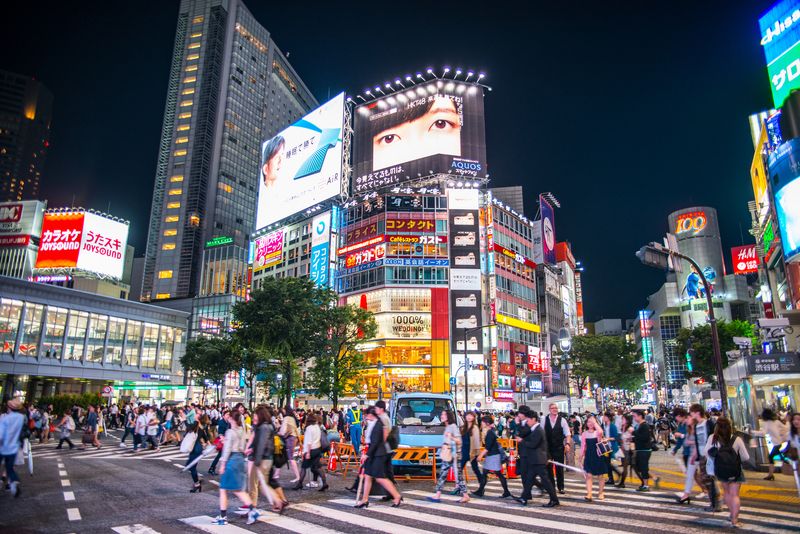
Instagram and movies have made this Tokyo intersection famous worldwide. In reality, it’s just a really busy crosswalk where you’ll spend more time trying to get the perfect photo than actually enjoying the experience.
Finding a good vantage point means battling crowds at the Starbucks window or nearby department stores. Street level crossing gives you a brief 30-second walk before you’re pushed back onto the sidewalk to wait for the next light change.
Tokyo offers countless fascinating cultural experiences – peaceful gardens, historic temples, quirky themed cafes, and incredible food markets. Spending more than 15 minutes at this glorified intersection means missing out on the city’s true treasures that lie just a few subway stops away.
8. Dubai Mall: Capitalism’s Temple of Excess

The world’s largest shopping center promises an extraordinary experience but delivers a sterile, exhausting marathon through endless luxury stores. My feet ached after hours of walking past the same international brands I could find at any upscale mall worldwide.
Yes, there’s an aquarium and an ice rink, but they’re crowded and overpriced. The food courts offer little authentic Emirati cuisine, instead filling space with the same fast food chains found globally.
Dubai has fascinating cultural districts like Al Fahidi, beautiful desert landscapes, and architectural marvels beyond shopping centers. Skip the mall marathon and seek out experiences that actually teach you something about this unique region rather than global consumerism.
9. Mount Rushmore: Smaller Than Every Photo Suggests

After driving hours through South Dakota, I finally arrived at Mount Rushmore expecting to be awestruck. Instead, I squinted at what looked like tiny faces carved into a distant mountain – much smaller than every photograph had led me to believe.
The visitor experience consists of a short walkway with limited viewing angles, a gift shop, and not much else. Most visitors complete the entire experience in under an hour, wondering if the long journey was worthwhile.
The Black Hills region offers genuinely impressive natural beauty and fascinating attractions like Custer State Park and Wind Cave National Park. These lesser-known destinations provide more memorable experiences than the brief disappointment of seeing presidents’ faces smaller than you anticipated.
10. Venice in Summer: Beautiful City, Brutal Crowds

Venice’s timeless beauty is undeniable, but visiting in summer transforms this romantic city into a sweaty, overcrowded nightmare. Narrow alleyways become human traffic jams, with tour groups blocking bridges and making movement nearly impossible.
Gondola rides cost a fortune (€80+ for 30 minutes) and often involve waiting in long lines only to be rushed through congested canals. Restaurants near major attractions serve mediocre food at inflated prices to captive tourists who can’t escape the crowds.
If Venice is on your bucket list, visit in winter or early spring instead. The misty atmosphere adds mystery, prices drop significantly, and you’ll actually be able to experience the city’s magic without thousands of other tourists in every photo.
11. Loch Ness: Beautiful Lake, Monstrous Disappointment
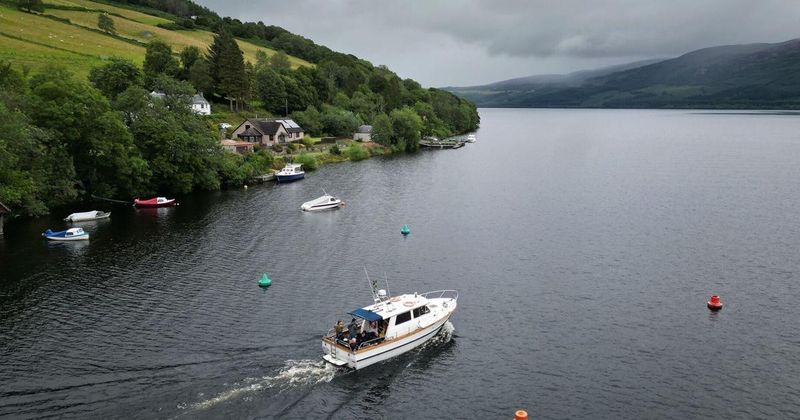
Loch Ness is just a lake – a pretty one, but still just a lake. The monster-hunting industry has created tacky attractions that cheapen the natural beauty of the Scottish Highlands.
Overpriced boat tours promise monster sightings that never materialize. Gift shops sell plush Nessies and plastic souvenirs that end up forgotten or discarded. The “official” Loch Ness Centre charges admission for what amounts to a glorified gift shop with some displays.
Scotland offers truly breathtaking landscapes throughout the Highlands without the tourist traps. Skip the monster hunt and explore places like Glencoe, the Isle of Skye, or countless other lochs that offer similar scenery without the commercialization and false promises of cryptid encounters.
12. Bourbon Street: Where Authentic New Orleans Goes to Die

New Orleans pulses with incredible culture, music, and cuisine – almost none of which you’ll find on Bourbon Street. This infamous strip has devolved into a tacky parade of overpriced daiquiri shops, tourist-trap bars, and the persistent smell of stale beer.
Street hustlers target obvious tourists while music blaring from competing bars creates a cacophony rather than the soulful jazz the city is known for. Drink prices are inflated, and the food options pale compared to what you’ll find just blocks away.
The real New Orleans awaits on Frenchmen Street for music, Magazine Street for shopping, and countless local neighborhoods for authentic cuisine. Spend no more than 15 minutes on Bourbon Street before escaping to experience the city’s genuine charm elsewhere.
13. Santorini: Instagram vs. Reality

Those perfect white-and-blue Santorini photos hide an uncomfortable truth – you’ll share those views with thousands of others. The famous sunset in Oia involves claiming a spot hours early or paying exorbitant prices for a restaurant reservation.
Cruise ships disgorge thousands of day-trippers, creating human gridlock in villages built for a fraction of today’s visitor numbers. Many iconic photo spots now have actual lines with 30+ minute waits for a quick picture.
Hotels with caldera views charge astronomical rates for tiny rooms, often exceeding €500/night in season. For a more authentic and affordable Greek island experience, consider Folegandros, Amorgos, or Sifnos – equally beautiful but without the Instagram-driven crowds and prices.
14. Ljubljana: Slovenia’s Storybook Capital That Stole My Heart

Ljubljana wasn’t even on my original itinerary – I added it as a convenient stopover between Croatia and Austria. This unexpected detour became one of my favorite European discoveries.
The car-free old town centers around a meandering river lined with vibrant cafes where locals and visitors mingle without tourist-trap pricing. Dragon Bridge and the hilltop castle provide perfect photo opportunities without the crowds of more famous European capitals.
Green spaces punctuate the city, giving it a refreshing, livable feel. The food scene blends Balkan, Italian, and Austrian influences into something uniquely Slovenian. Ljubljana offers everything I love about European capitals – culture, cuisine, and charm – without the exhausting crowds or inflated prices.
15. Porto: Portugal’s Colorful Northern Gem

While tourists flock to Lisbon, Porto quietly delivers a more authentic Portuguese experience. The UNESCO-listed Ribeira district tumbles down to the Douro River in a cascade of colorful buildings that feel genuinely lived-in rather than preserved for tourism.
Wine cellars across the river in Vila Nova de Gaia offer excellent port tastings at reasonable prices. The food scene prioritizes quality over tourist-friendly blandness – try the francesinha sandwich if you’re feeling brave!
Porto balances perfectly between being tourist-friendly and authentically Portuguese. Bookshops inspired Harry Potter, vintage trams climb steep hills, and locals still outnumber visitors in most neighborhoods. I spent half what I would have in Barcelona or Paris while enjoying a more relaxed, genuine experience.
16. Tallinn: Medieval Magic Without the Tourist Masses

Tallinn’s Old Town looks like it was plucked straight from a fairy tale, with its intact medieval walls, cobblestone streets, and towering spires. Unlike Prague or Krakow, however, it hasn’t yet been overrun by bachelor parties and tour groups.
Estonian cuisine surprised me with its sophistication – local restaurants serve foraged ingredients and Baltic specialties at prices that would be impossible in Western Europe. The contrast between the medieval core and the tech-forward modern city (Skype was invented here) creates a fascinating dynamic.
Friendly locals speak excellent English and seem genuinely pleased to share their culture rather than tired of tourists. Tallinn offers the perfect balance – enough tourism infrastructure to be comfortable, but not so much that it feels like a theme park.
17. Mostar: Bosnia’s Bridge Between Cultures

Mostar rarely makes European itineraries, which is precisely what makes it special. The famous Stari Most (Old Bridge) arcing over emerald waters creates one of Europe’s most dramatic scenes, yet I shared it with just a handful of other visitors.
The city bears visible scars from the 1990s war, creating a powerful contrast between beauty and tragedy. Local guides offer deeply personal perspectives rather than rehearsed scripts, making history come alive in ways no textbook could.
Coffee culture thrives in tiny cafes where Bosnian coffee (similar to Turkish) is served with sweet lokum candy. Restaurants offer hearty Balkan cuisine at prices that seem like misprints compared to coastal Croatia just an hour away. Mostar delivers authenticity, history, and beauty without the tourist markup.
18. Quebec City: European Charm Without Crossing the Atlantic
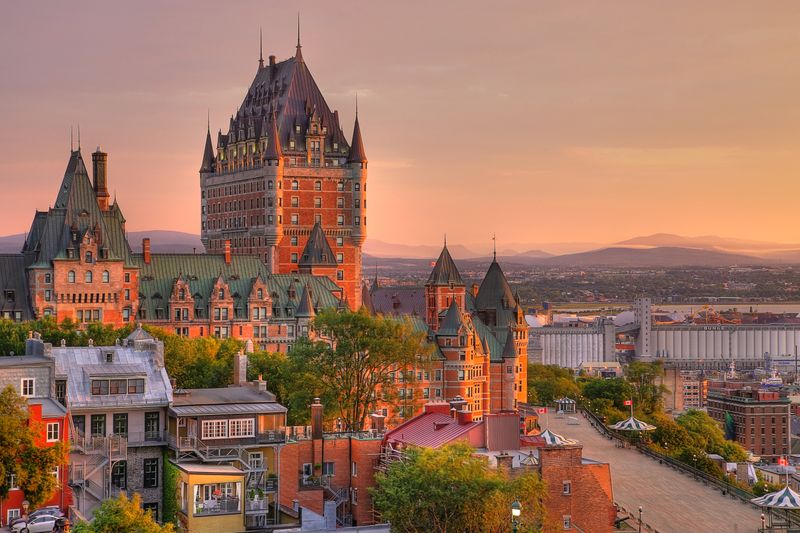
Quebec City offers European ambiance without the transatlantic flight. The walled Old Town with its narrow cobblestone streets and stone buildings transported me to France, yet retained a distinctly North American openness.
Winter transforms the city into a magical snow globe, especially during Carnaval when ice sculptures and winter activities take center stage. Summer brings outdoor cafes and street performers to the pedestrian-friendly historic district.
French is the primary language, but locals happily switch to English when needed. The food scene blends French technique with Canadian ingredients – try poutine elevated to gourmet status or maple-infused everything. Quebec City delivers old-world charm with new-world convenience, all without the jet lag of a European vacation.
19. Gjirokastër: Albania’s Stone City Time Capsule
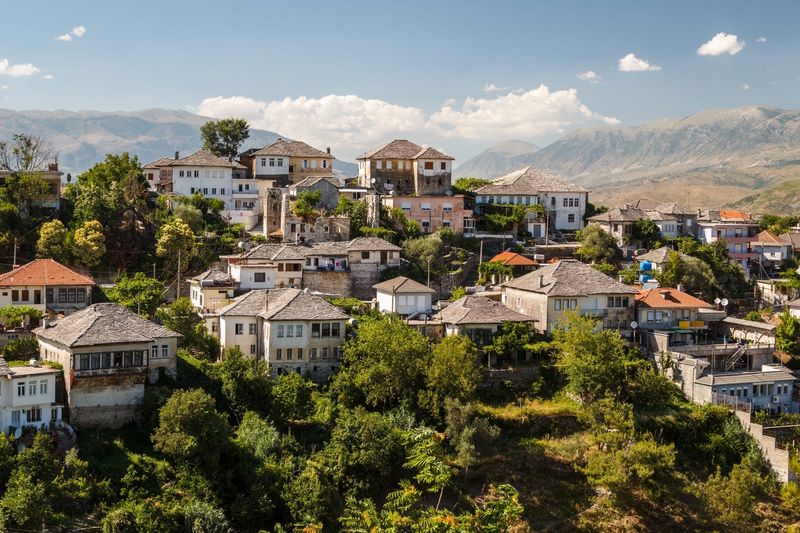
Albania wasn’t on my travel radar until a fellow backpacker showed me photos of Gjirokastër. This UNESCO-listed Ottoman-era town perched in the mountains exceeded every expectation with its stone streets and fortress overlooking a perfect valley panorama.
The distinctive stone houses with slate roofs create a unified architectural harmony rarely seen in the age of concrete. Local restaurants serve traditional Albanian dishes like qifqi (herb-infused rice balls) and slow-cooked lamb at prices that made me double-check the conversion rate.
Tourism infrastructure is developing but not overwhelming – you’ll find comfortable guesthouses in restored historic buildings but won’t battle selfie sticks at every turn. Gjirokastër offers a glimpse of Mediterranean life before mass tourism changed everything.
20. Colmar: The French Fairytale Village That Actually Delivers
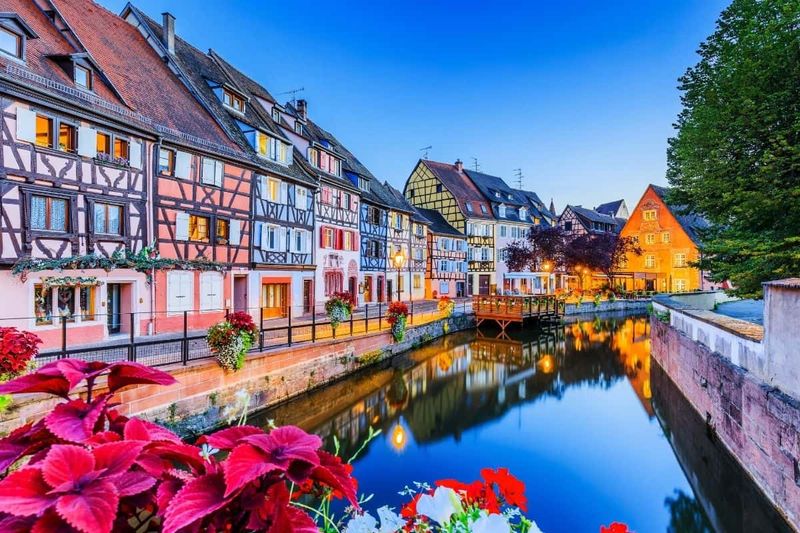
France has no shortage of picturesque villages, but Colmar in Alsace stands out as the rare place that exceeds its postcard promise. Half-timbered houses in pastel hues line canals in the aptly-named Little Venice district, creating scenes so perfect they seem artificial – but they’re not.
Alsatian cuisine blends French and German influences into hearty comfort food perfectly paired with local wines. The surrounding wine route connects charming villages through vineyard-covered hills that produce some of France’s most distinctive white wines.
While definitely on the tourist map, Colmar manages to maintain authentic daily life alongside its picture-perfect streets. Visit during shoulder season to experience the charm without summer crowds, when you can wander freely and imagine yourself in a real-life fairytale.
21. Tbilisi: Georgia’s Capital of Creative Renaissance

Georgia (the country, not the state) rarely makes Western travel lists, making Tbilisi one of Europe’s best-kept secrets. The city blends crumbling 19th-century architecture, Soviet-era monuments, ultramodern structures, and ancient thermal baths into an intoxicating urban collage.
Food and wine form the cornerstone of Georgian culture – khachapuri (cheese bread) and khinkali (soup dumplings) accompanied by natural wines from the world’s oldest winemaking tradition. Meals often stretch for hours as Georgians practice their legendary hospitality.
The emerging arts scene thrives in repurposed industrial spaces and bohemian cafes. Prices remain remarkably affordable compared to Western Europe or even Eastern European hotspots like Prague. Tbilisi offers the perfect combination of exotic yet accessible, familiar yet surprising.
